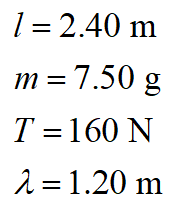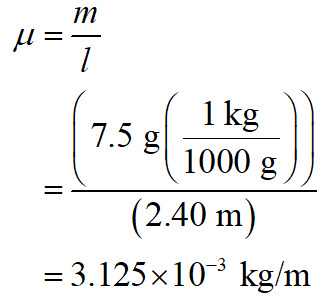(a) A standing wave can produce a resonance frequencey. Some times the resonance is useful and sometime it is harmful and dangerous. Explain. (b) A 2.40 m wire has a mass of 7.50 g and is under a tension of 160 N. The wire is held rigidly at both ends and set into oscillation by a frequency that produces a standing wave with a wavelength equal to 1.20 m. |(1) What is the speed of waves on the wire? | (ii) What is the frequency used to drive the string into resonance? (ii) Find the number of harmonics (resonant mode) of the standing wave. Also the number and positions of nodes and antinodes.
9

Given information:

Here, l is the wire’s length, m is the wire’s mass, T is the tension in the wire, and λ is the wavelength of the standing wave.
(a)
The condition of resonance is very useful in the electronics, in LC oscillator the concept of resonance is used, and also the musical instrument (string-based) produces different harmonics because of the resonance.
The resonance can be harmful in the case of soldiers walking pass over a bridge, the simultaneous movements of the individual soldier set the bridge in resonance, and in the worst case the bride may collapse.
(b)
The mass per unit length (µ) of the wire can be calculated as follows.

(i)
Write the formula of the transverse wave on the string and plug the required values to determine the wave’s speed (v) on the wire.

Step by step
Solved in 5 steps with 6 images









